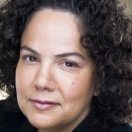
In building the President's America's Great Outdoors initiative, we sought to create a 21st century conservation legacy that reflects the priorities of the American people and preserves our nation's natural treasures for future generations. That's why we went across the country to learn from communities - especially our youth - about the protections and places that they care about the most. By listening to you, we were able to launch a conservation agenda with you, for you. We learned a lot from you and the learning doesn't stop there.
As we visit communities across the country, we have the chance to continue this dialog. On a recent visit to Baltimore, MD, I had the chance to visit students at the Living Classrooms Foundation's East Harbor Campus and hear from them directly about what they're learning from the environment that's all around them even in a dense urban setting. Joined by Congressman John Sarbanes and Baltimore Mayor Stephanie Rawlings-Blake, I got my hands dirty with these fifth through eighth graders working on projects that improve the health of their community while learning about the environment. We hear from students and teachers about how kids are becoming better students and getting more out of school through hands-on interaction with nature and science.
Growing up on Little Neck Bay in New York, I remember not being able to swim in or enjoy the Bay because it was too polluted. Through planting floating wetlands, the kids we met are contributing directly to making the Baltimore Inner Harbor fishable and swimmable by 2020 and making the Chesapeake Bay healthier. These students are getting the change to learn in new ways about the outdoors, in the outdoors while giving back to their community.
When President Obama created the America's Great Outdoors Initiative, he had America's kids especially in mind. Today, kids spend far more time inside than their parents did. Many of them also live in cities or suburbs, where it can be hard to find a safe and accessible green space to play. America's children will live with the consequences of the decisions we make today about whether to protect and restore our outdoor spaces, or lose them to pollution or poorly planned development.
Through the Administration's America’s Great Outdoors Initiative, we are confronting these challenges through a new 21st century conservation and recreation agenda. This agenda will not only benefit our urban centers but America's vast rural communities and economies as well. You too can be a part of America's Great Outdoors.
Nancy Sutley is Chair of the Council on Environmental Quality




